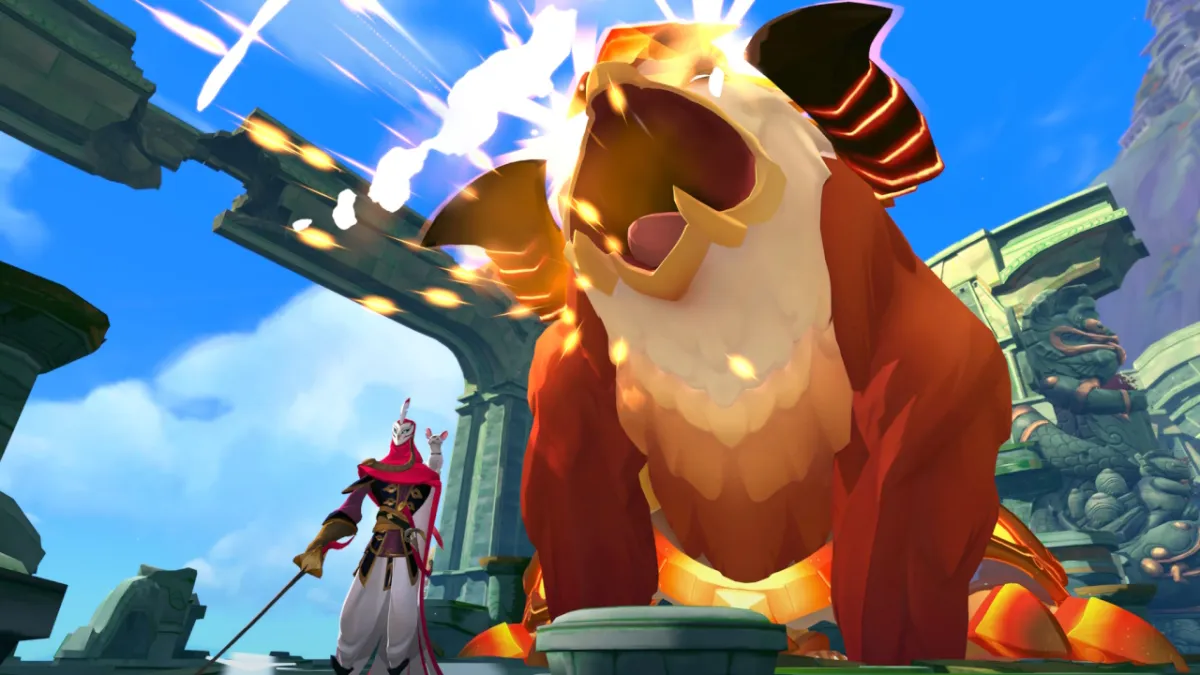I’ve been a bit mean on poor old Splinter Cell: Blacklist, I admit. Prior to release, every single news item I wrote about the game mentioned – somewhere – the fact that Michael Ironside would not be returning as Sam Fisher. In all seriousness, his Sam Fisher-like disappearance isn’t necessarily a bad thing because Ironside didn’t seem to care overmuch about Splinter Cell: Conviction‘s script, and his replacement here does a passable job. He’s not Michael Ironside (and thus I still don’t quite buy him as Sam Fisher) and he’s rather bland, but it’s still rare for him to elicit a reaction other than “well, I guess this guy’s okay.”
(I’ve also spent a lot of time calling it things other than Blacklist. This is a trend that’s going to continue.)

Sam began to wonder if having Fourth Echleon skywrite his mission objectives was perhaps giving the game away a little.
The script, on the other hand, is a bit more mixed. Splinter Cell: Black Plague follows on directly from Conviction, and – despite having a good villain, some decent plotting, and a gripping story – it occasionally makes Fisher look like a tantrum-throwing idiot. If you’re used to him being a snarky-but-level-headed operator who doesn’t panic and is always in control, get ready to sigh loudly.
In everything else, though, Splinter Cell: Blackberry blows Conviction away, which is a pretty good thing considering Conviction was… not really a Splinter Cell game. It was a bit more linear, a bit more focused on the new Mark and Execute feature (which let you “mark” targets and then instantly kill all of them with one button press) and a bit more combat heavy, with features like a marker for your last known position. Splinter Cell: Blackbird takes most of these ideas, but transplants them into something that’s a lot more Splinter Cell.
Prior to release, Ubisoft spent a lot of time telling everyone that you could play in three styles – Ghost, Panther, or Assault – and swap between them as you liked. If you’ve listened to the podcast you’ll already know that these aren’t to be taken literally (if you’re playing in Ghost style you’re not trying to scare away terrorists, and if you’re going Panther style you don’t need to stop to piss to, uh, mark your territory) but they genuinely provide a number of ways to play the game.

Sonar Goggles have the advantage of letting you see through walls (except on the highest difficulty) with the minor disadvantage of turning you into Mr. Magoo if you attempt to move while using them.
Assault is basically what you’d expect, in that you play like a cover shooter. Equip Sam with frag grenades, proximity mines, heavy armour, and the biggest guns you can buy, and then shoot your way through the missions. It’s also the dullest way to play, by a very long way.
Panther focuses on stealth and lethal kills. This is where you’re using silenced weapons and a combat knife, stalking your way through the levels, quietly murdering everyone like a spectacularly noiseless slasher movie monster. Ghost, conversely, focuses on non-lethal takedowns through chokeholds, sticky shockers, and sleeping gas (all of which can apparently result in them being woken by allies, though I never saw this happen), but to really play like a Ghost and get the most points, you need to leave enemies undisturbed. And yes, I said points: completing missions gets you money based on how many “points” you’ve earned, and earning the most seems to rely on you moving through levels like a shadow.
You’re not, thankfully, forced into any of these styles. You might start off a level playing as a Ghost, sneaking past enemies and maybe subduing a few. Then you get spotted, so you vanish into the darkness and start picking off your hunters with a silenced pistol, seamlessly shifting into Panther mode. Get spotted again with no means of quickly vanishing, and it might be time to pull out your assault rifle and play Assault until you can open up an escape route.

This is one of Grim’s bonus stealth missions. It is really rather hard to go through non-lethally, as the sniper’s giant red laser possibly indicates.
Which is – sigh – sort of like Dishonored, in that you can pretty seamlessly swap between stealth and full-on combat at any given time, and there’s even a bit of in-betweening depending on whether you’re trying to go lethal or not.
Splinter Cell: Black Magic isn’t as accomplished or open as Dishonored, but it does pretty well with what it offers. Level design is pretty damn good across the board, with multiple routes and options available at any given time, and a few levels even echo the first game’s Langley break-in in terms of “I can’t believe I’m about to do a mission in this location.” So yes, it makes good use of its multiple playstyles, generally keeping things entirely open unless there are extenuating circumstances that force you into stealth or don’t-kill-anyone-or-you-fail-the-mission mode.
There are also a whole swathe of bonus missions offered by each of the Fourth Echelon operators to sneak through. Grim’s missions demand you remain undetected, Charlie’s have you hold out against waves of enemies in well-designed survival levels that let you shoot it out or act like a silent predator, Briggs has a few co-op missions set up, and Unnamed Fourth Person Because Early-Game Spoilers’ missions have you knock out or kill everyone in an area. These all give you a good opportunity to get used to the mechanics, try out new gear or item builds, go on a murder spree, or just earn a bit more cash.

Post-mission debriefings on the Paladin are occasionally reminiscent of the ending to most Star Trek: The Original Series episodes.
Said money can be used to upgrade either the Paladin (the plane that forms Fourth Echelon’s base of operations) in order to get bonuses like an in-game radar, extra loadout slots, and faster healing, or to upgrade and outfit Fisher’s gear with gun mods, new gadgets, and utterly pointless cosmetic options… like making his trademark green lights pink, which is fantastic. These mods and upgrades make a definite difference and I rather like the choice on offer and the constant feeling of having new toys, although Fisher is surprisingly cack with no upgrades, and it’s just weird he needs to unlock things like proximity mines.
I want to go back to talking about the script, though, as – barring Sam himself and a rather naff ending that’s clearly leading up to a sequel and fails to explain a few key points – it’s actually pretty good. The main cast tend to fall into standard tropes (the tough-but-fair mission commander, the nerdy comic relief who nobody likes at the start but grows by the end, the by-the-book soldier…) but that’s not necessarily a bad thing, and there’s a rather wonderful human touch in Sam’s ability to phone his daughter after every mission to get news on how she and the local populace are dealing with the threat of scheduled terror attacks.
There’s a decent villain who makes regular appearances throughout the game and has a degree of personality. There are some personal moments, rather than just following the standard “going on a mission” structure throughout the game. Sam’s mission to stop the Blacklist terror attacks is generally interesting, and provides a genuine race-against-time feeling with the countdown in the Paladin a constant reminder that things will go very, very bad soon. (Unless you do a bonus mission when there are only three hours to the next attack, at least, at which point it feels a bit silly because the clock never advances unless you’re doing a main mission.)

No, I wasn’t kidding about the ability to make the lights pink.
The game also tries to make use of choices, but, uh… I didn’t notice any real consequences, with a few even resulting in the exact same outcome no matter what you do. In a completely made-up example, do you kill the wounded terrorist once he’s given you some info, or do you call for a medic? It doesn’t matter; he’ll probably die anyway and – even if he doesn’t – he’ll never turn up again regardless!
That’s silly, but it’s not so bad. No, the biggest problems the game has – excluding a few genuinely rubbish and frustrating segments in levels, and the fact that unless you’re outfitted in pure stealth gear, people tend to hear Sam sneaking up behind them – are the controls. They’re not bad, for the most part, but… well, you know how E is the default “use” key in games? Ubisoft appear to have decided that E stands for Everything, because that’s what this button does.
Want to hack a terminal? Press E. Want to pick up a body? E. Pick up a gun? E. Knock out a guard? E. Which gets really fun when you are, for instance, hiding around a corner next to a terminal that you have to hack, with an unconscious guard at your feet (along with his gun) and another coming around the corner. When you press E, will Sam hack the terminal, knock out the guard about to stroll around the corner, pick up the body, or pick up the guard’s gun? No idea! Which has resulted in more than one very, very stupid death, and there’s really very little reason for all of these actions not to be bindable on a PC keyboard.

You would not believe how many of the screenshots I took are unusable because they’re too bloody dark. Which is a shame, because that’s when the lighting effects are at their nicest.
Actually, I lied – it’s got a bigger problem than this, but it’s not a problem that seems to be affecting everyone. Have you been wondering why I haven’t mentioned the co-op play, or the Spies vs Mercs competitive multiplayer, or any of the online functionality? Well, that’s because it doesn’t actually work for me. At all. And I’m not alone in this.
Part of me feels like I should dock the score for this, but for all I know it might be wonderful, and there may only be a very small minority of us having this problem. As such, I’m simply not going to address it; take this as a purely single-player review. Right now I’d caution you against buying Splinter Cell: Blackjack for multiplayer because it may not actually work, but the single-player is decent enough by itself to make this worth a punt.
Splinter Cell: Blackout isn’t a classic Splinter Cell game, but it takes the ideas first introduced in Conviction and actually marries them into a proper stealth game. It’s not perfect, but Splinter Cell: Blacklist (yes, it’s good enough that I’ll give its actual name again) is a damn good stealth game that gives you sizable levels, options, an interesting story to follow, and plenty of side missions to explore and gear to unlock. If you flew into an incoherent rage when you heard Michael Ironside wasn’t going to be in it that it probably won’t be old-school Splinter Cell enough for you, but for everyone else, I’d heartily recommend accepting this sneaky military mission.




